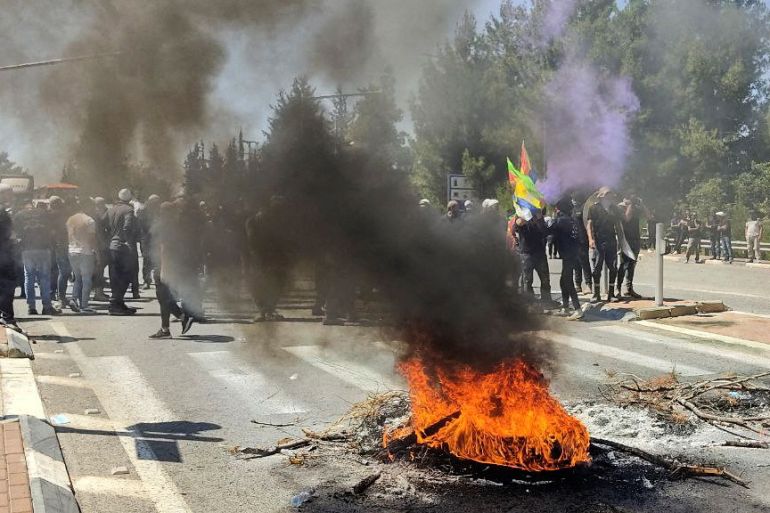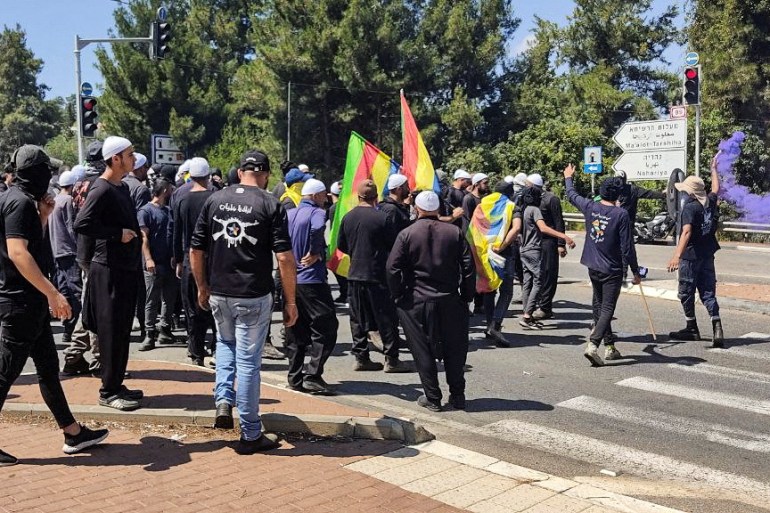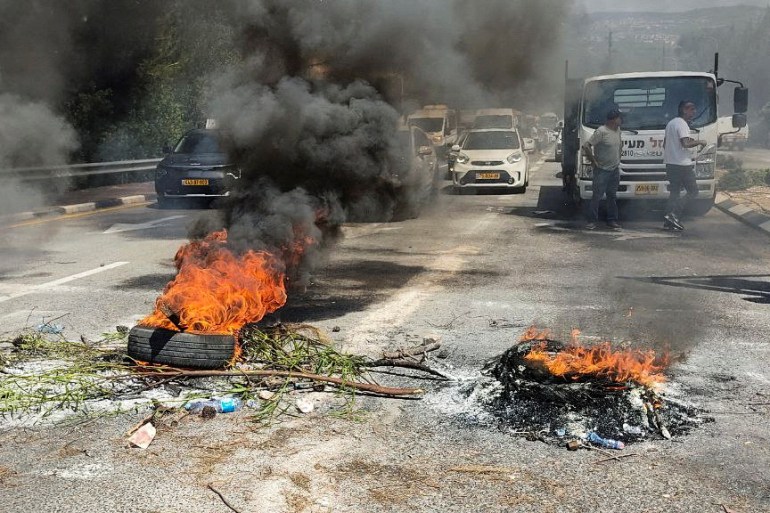Israeli army uses force against Druze protests in occupied Golan
Israeli forces use tear gas, bullets, and a water cannon in response to the protests against wind turbines.

Thousands of Druze Arab protesters in the occupied Golan Heights were met with Israeli tear gas, sponge-tipped bullets, and a water cannon as they demonstrated against the construction of wind turbines there.
The protests and their subsequent quelling by Israeli authorities took place on Wednesday in a region where relations between Druze residents and occupying Israeli forces are generally otherwise placid.
Keep reading
list of 4 itemsIsrael missiles target Damascus in latest attack on Syria: Media
Israel to ramp up settlement expansion in occupied West Bank
Israeli attacks on Syria in the past year: Timeline
The Druze residents fear the construction of the turbines will damage their properties, with landowners also saying they were not properly briefed on agreements they signed with a local power company.
At least 20 people were injured as authorities hit back at protesters who threw stones, set off fireworks, lit tyres, blocked roads, and vandalised cars. Eight civilians were left in serious condition, while 12 police officers were lightly wounded.
The protests also blocked off roads in northern Israel, with Druze citizens of Israel – who are 1.5 percent of the population and have representation in its military and public service – among the demonstrators.

Israeli Prime Minister Benjamin Netanyahu met Druze leader Sheikh Mowafaq Tarif to discuss the incident.
“I view with great severity and concern what is happening at the moment on the Golan Heights,” he said.
Israel occupied the Golan in the 1967 war and formally annexed the territory in 1981 from Syria, a move that prompted the United Nations Security Council to unanimously pass a resolution condemning the move.
Until then-US President Donald Trump’s decision to recognise the territory as Israel’s, no other country had accepted Israeli claims to it. Current US President Joe Biden has yet to reverse the recognition.
Israeli leaders have said the territory will “forever” remain part of Israel, announcing a plan in 2021 to double the number of Israeli settlers there to tighten its grip on the territory.
The Syrian government says the Golan Heights belongs to Syria and Druze leaders profess allegiance to Syria.
However, relations with Israel do not usually result in violence.
